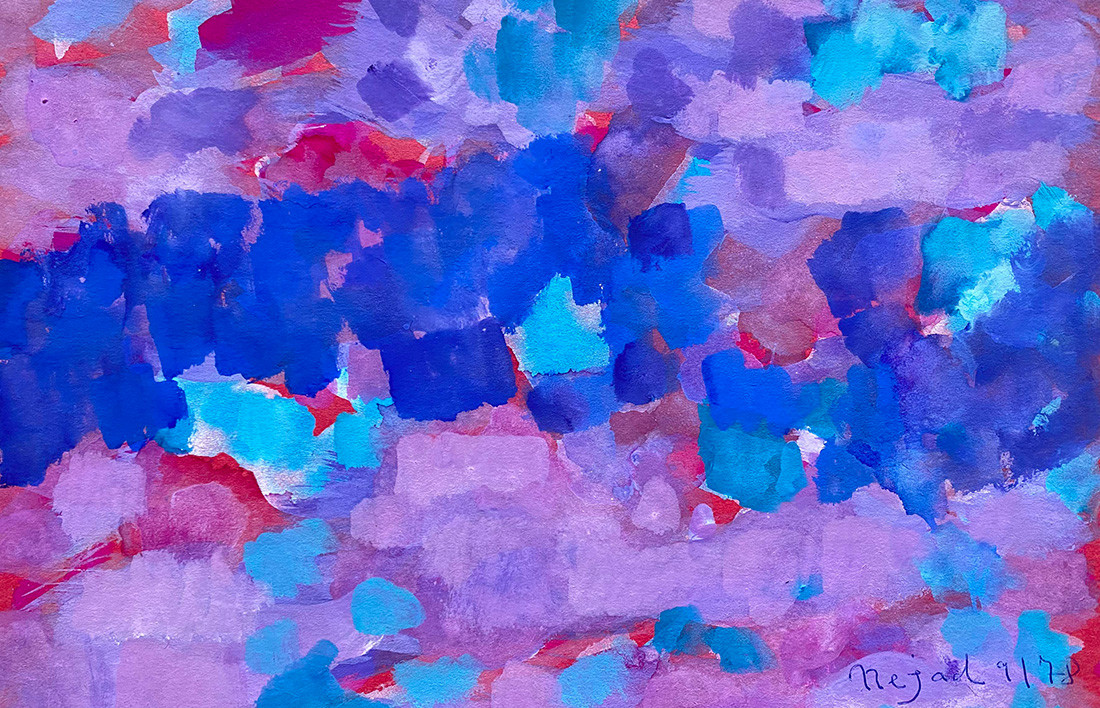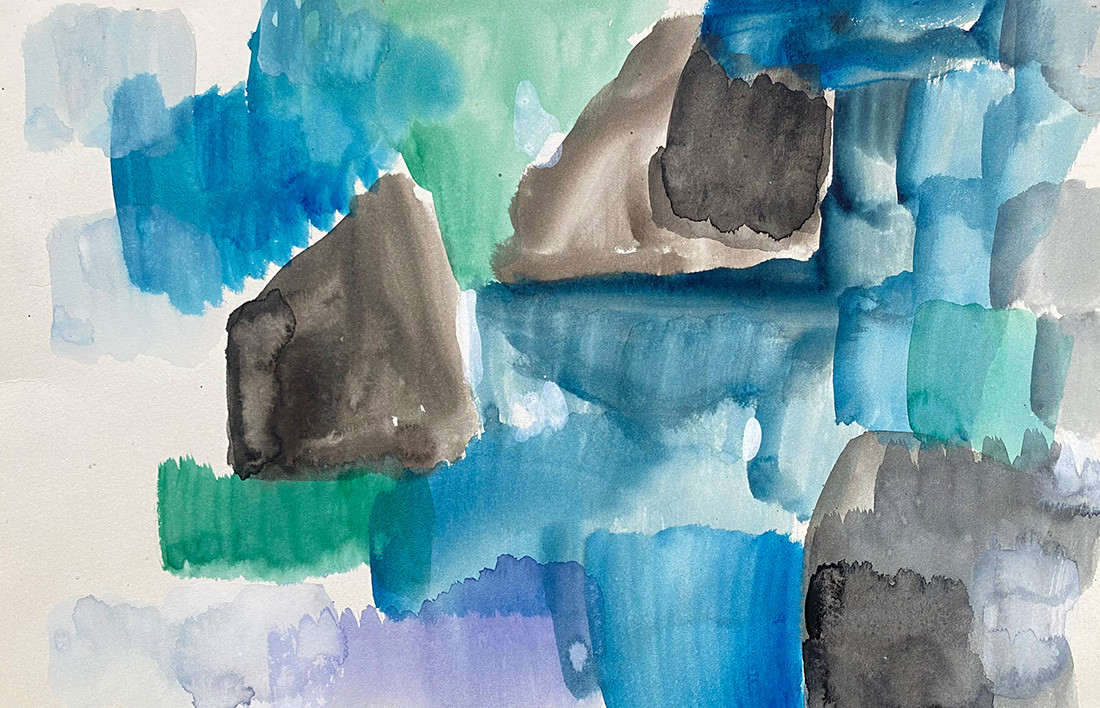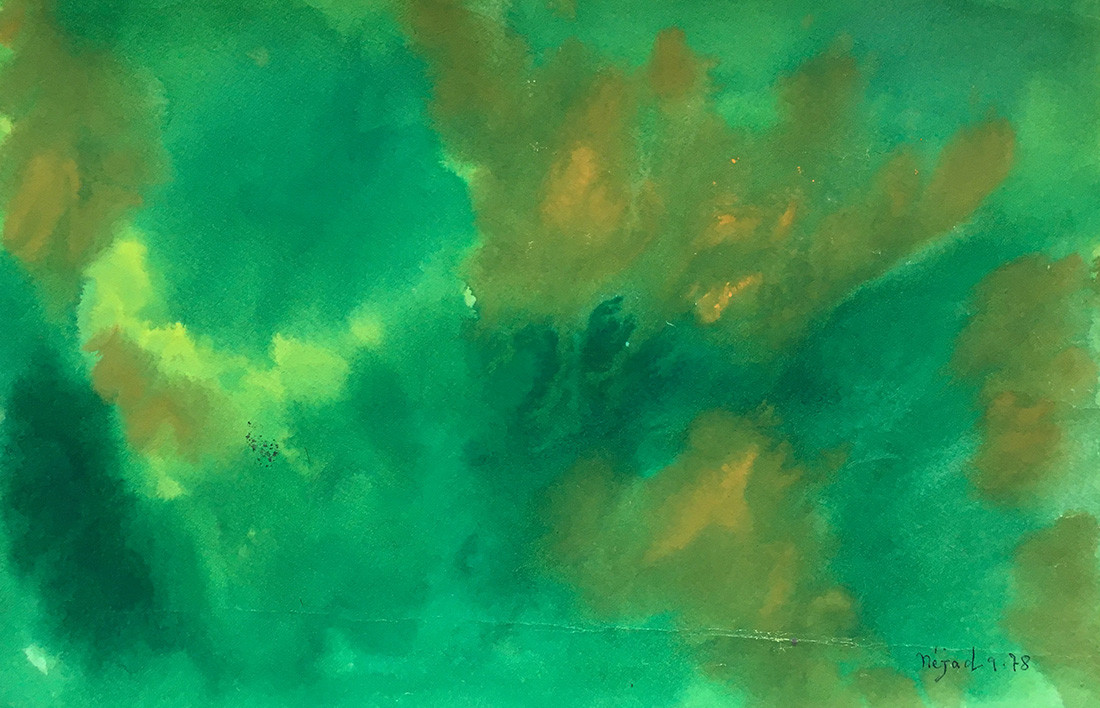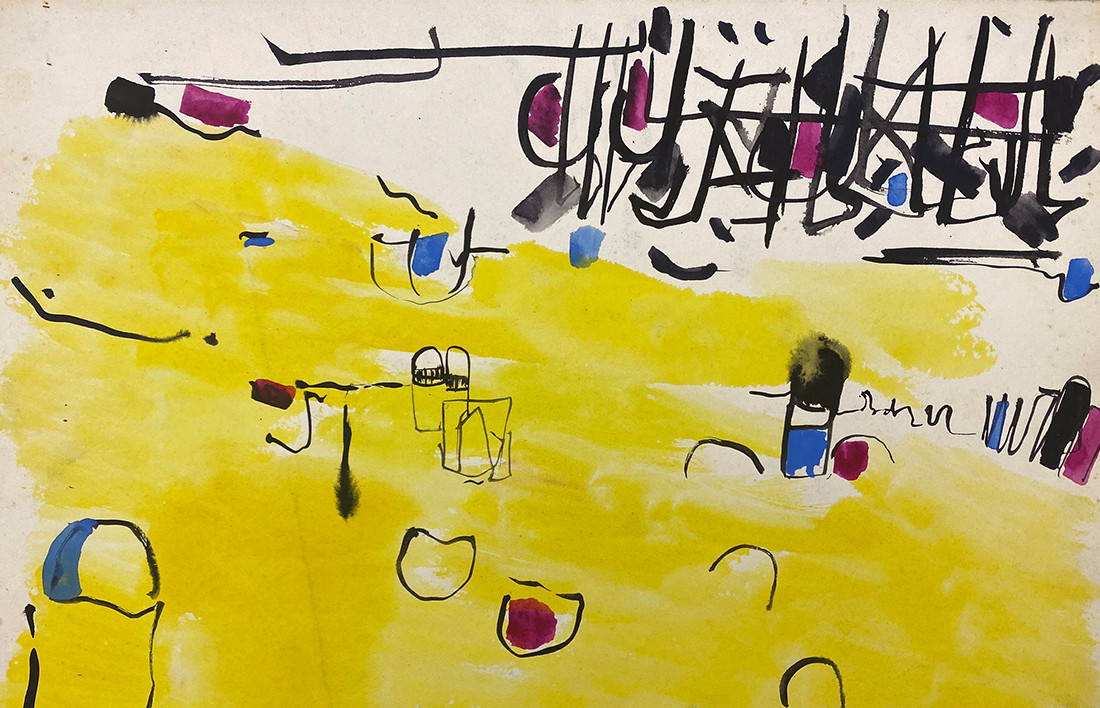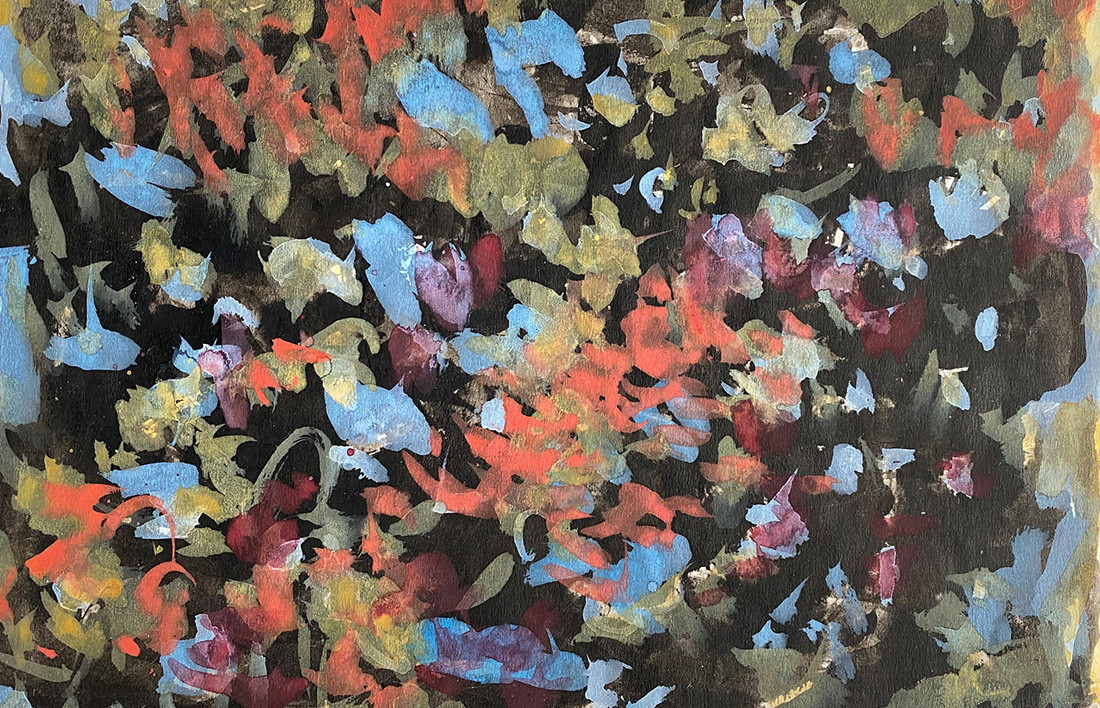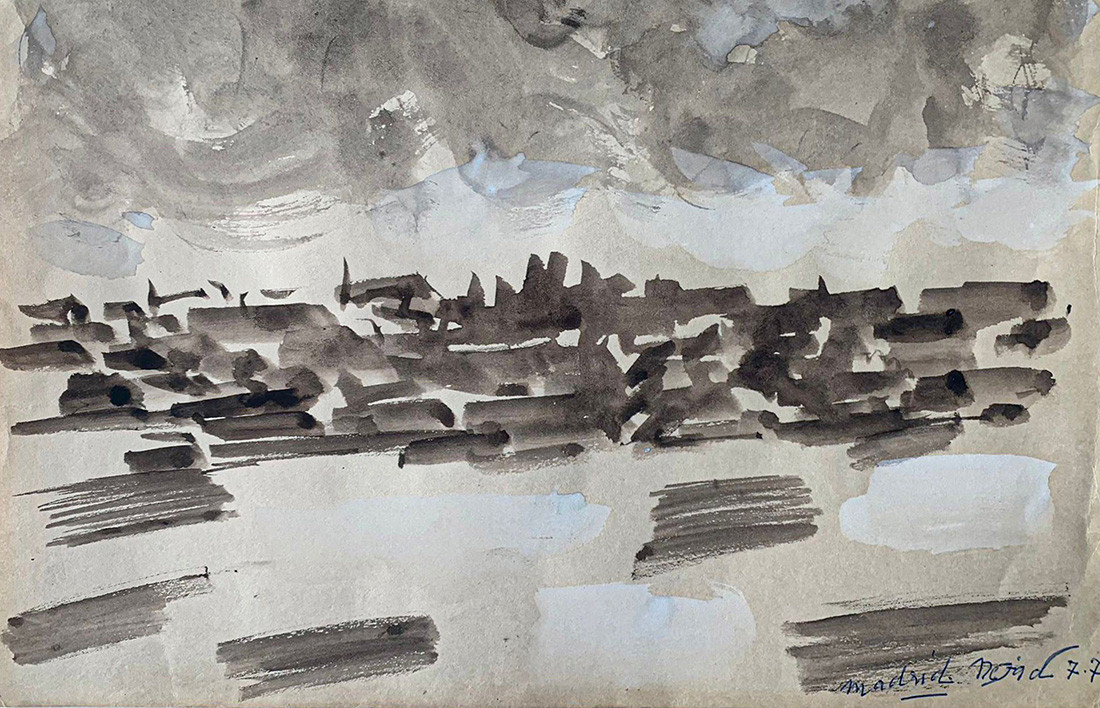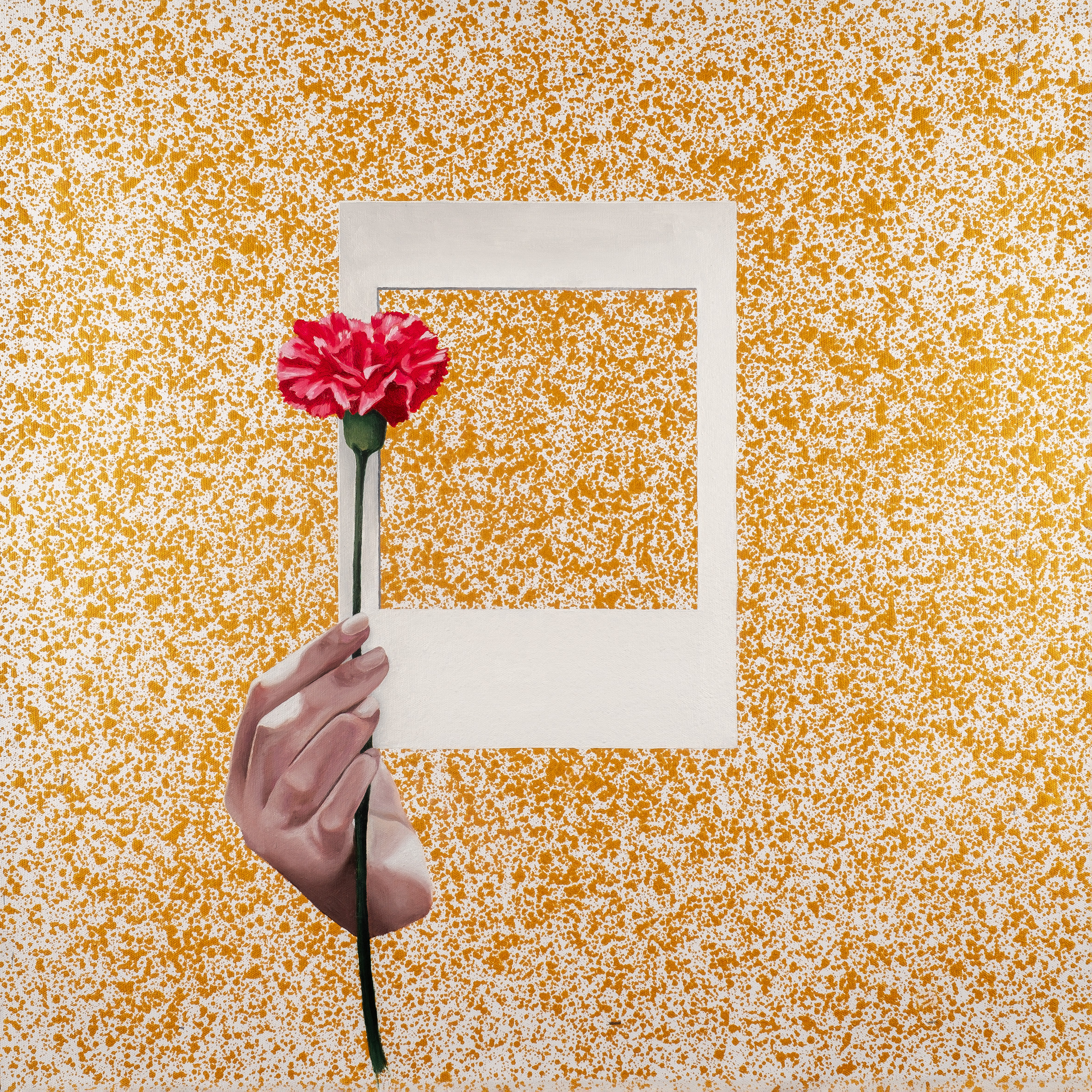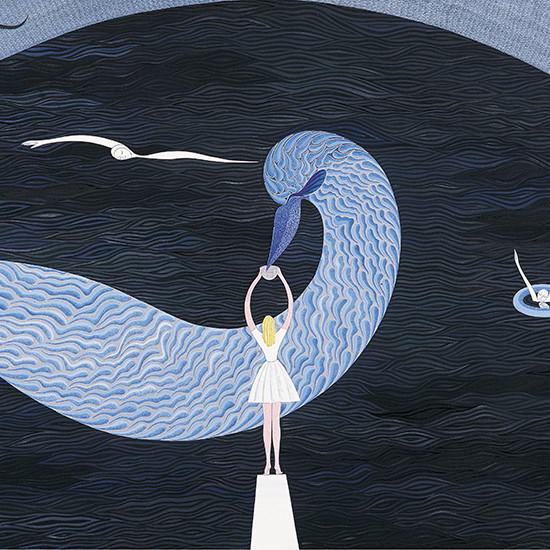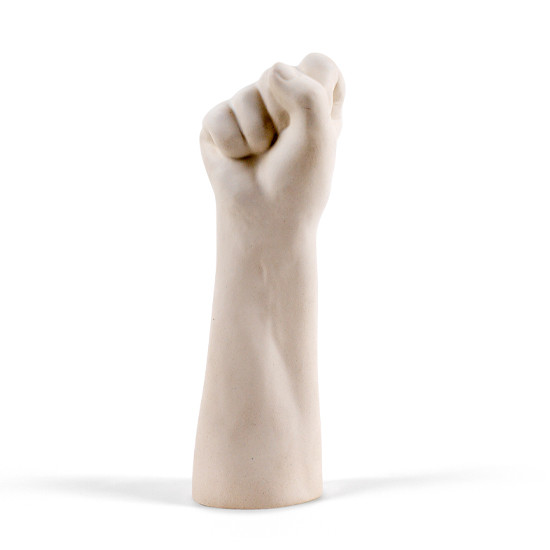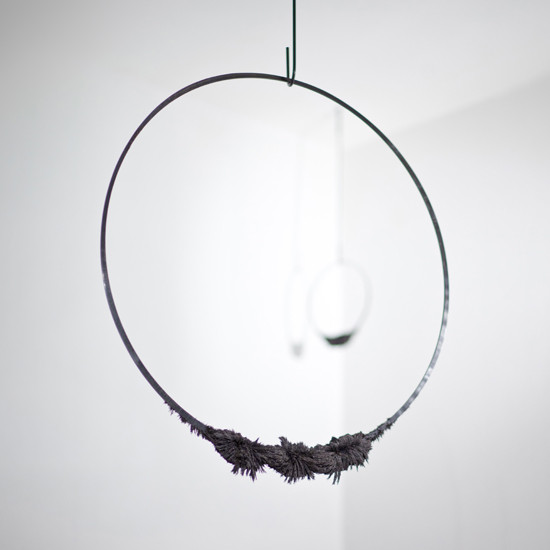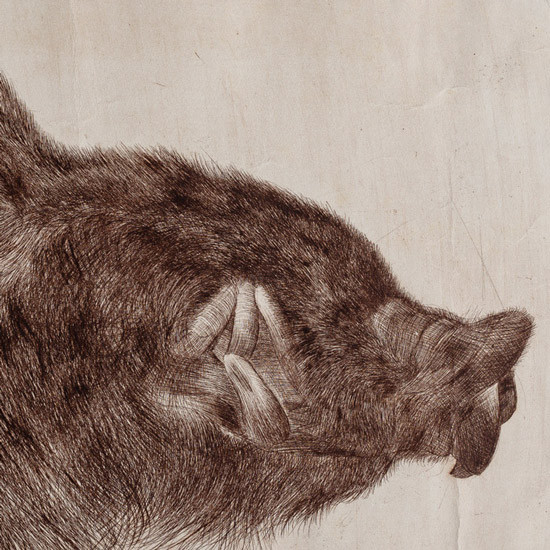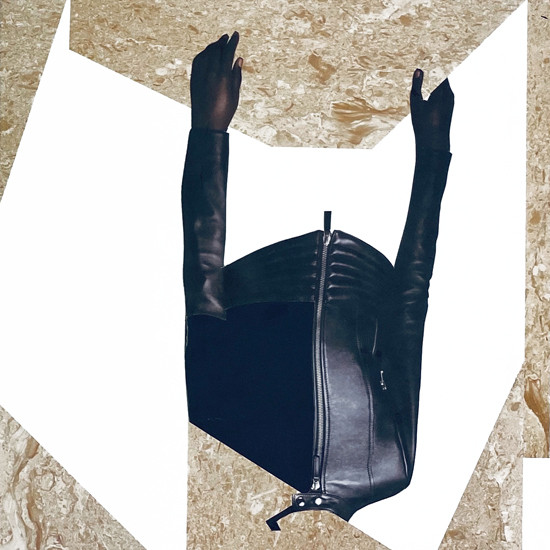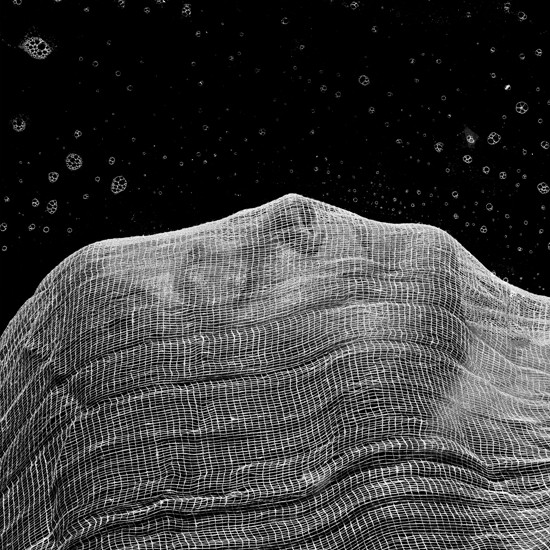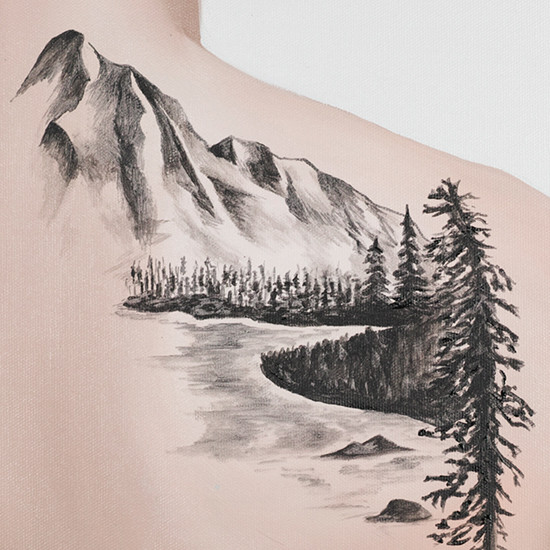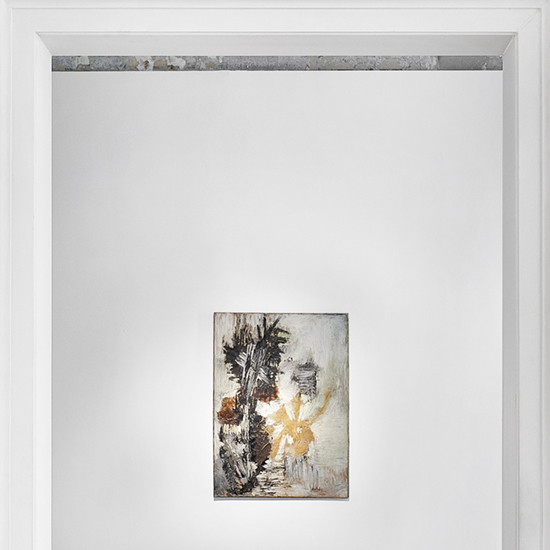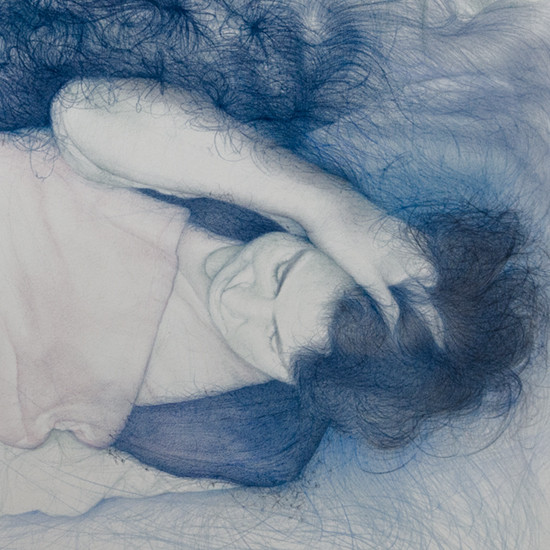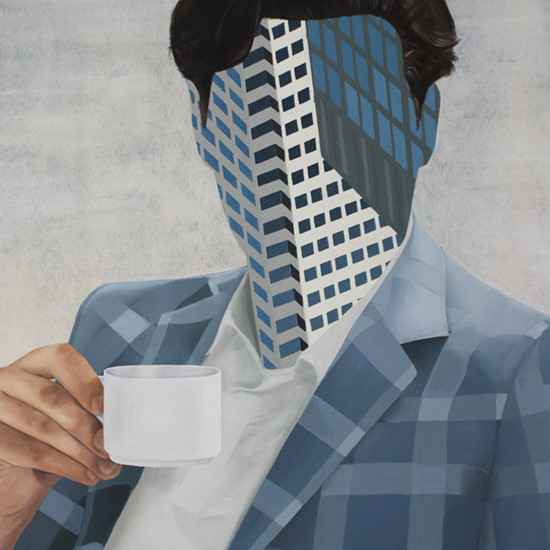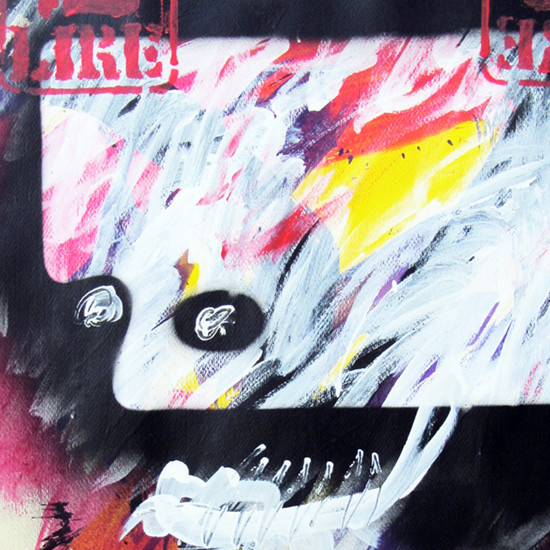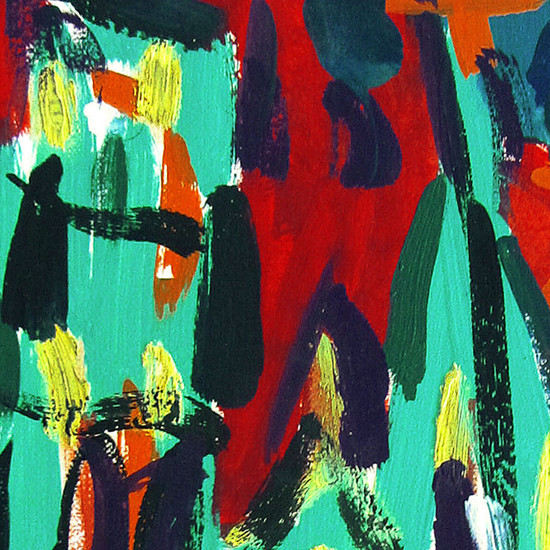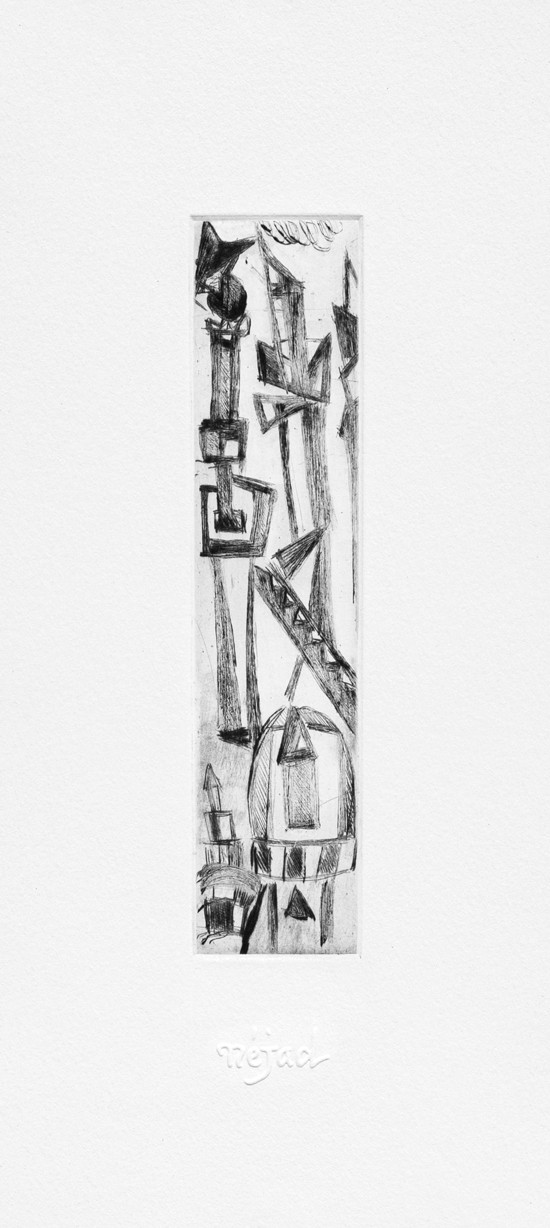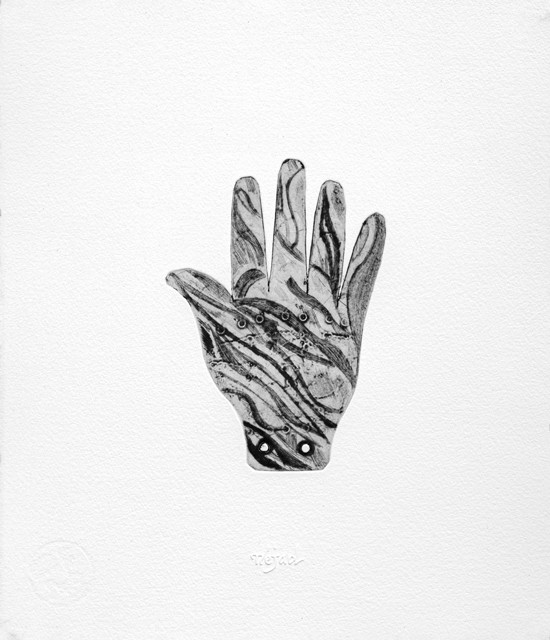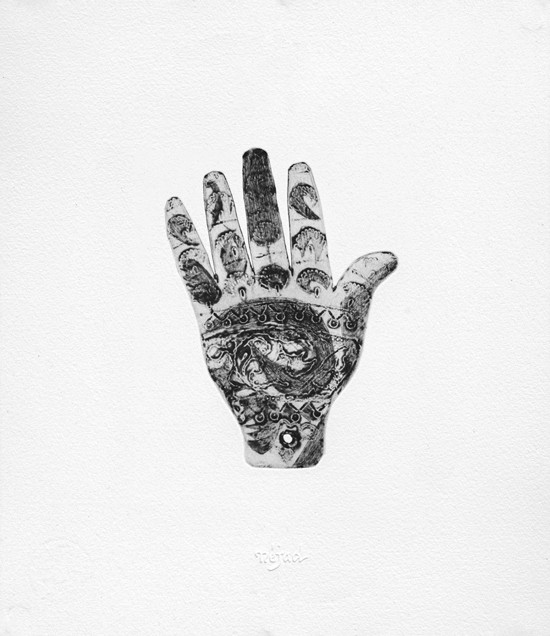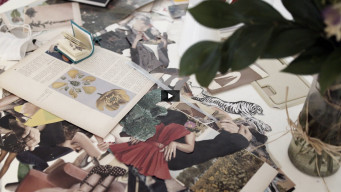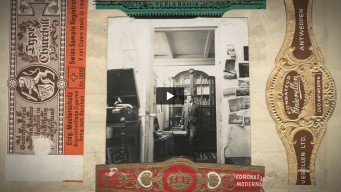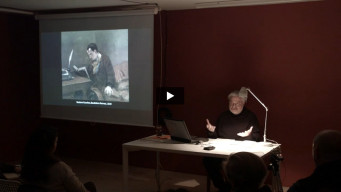Nejad Devrim often signed the lower left corner of his works. Though initially using “Nejad Melih”, he is best known for his Frenchized signature “Néjad”, with a distinguishing accent aigu over the letter “e”, or simply his surname’s initial, a curved lower case “n”. It wasn’t uncommon for the artist to include the name of a city beside his signature. He sometimes incorporated dates or numerals as well, occasionally in a hyphenated format, such as 3-1975, which might indicate March of the year 1975 or refer to a series or a succession of paintings.
To delve deeper, especially regarding his paintings, it’s imperative to turn Devrim’s works over. Galeri Nev emphasized this by attaching great importance to the visibility of the back of the canvas during his 2018 exhibition, showcasing a single piece of work surrounded by archival material. This allowed visitors to discover Nejad’s handwritten inscription “Château de Chambord, Symétrie Française, Paris 1954”. Regrettably, the same work had previously been listed as “Untitled” in both of the comprehensive Nejad Devrim catalogs published.
Devrim spent most of his life travelling, which profoundly influenced his oeuvre. On his journeys, he meticulously recorded clues and cues through which we can easily trace the paths he walked and reconstruct both the hundred-year history of his art and the broader scope of Art History in capital letters. Meanwhile, a publishing trend that overlooked the information that lies on the back of his paintings, has inscribed his works in history as “Untitled”. In other words, this omission destroyed the records, disrupted the paths, and erased the footsteps. The sun has disappeared in the storm.
One of the epithets attributed to Nejad Devrim in his letters preserved by Galeri Nev is “the sun lost in the storm”. The exhibition titled “Un Soleil Perdu Dans L'orage”, is conceived as a chromatic exercise, inspired by the principles of Google Image Search, and stands as a homage, commemorating Devrim’s contributions. His focus on the iconic landmarks of the cities he has visited allows us to recognize and name some of them. The remaining works are repositioned within Nejad’s geographical landscape through the imagination and analogies constructed by Galeri Nev’s curators. Concurrently, cross-references are provided to underline Devrim’s ability to recollect past visions, those of a few years ago, and those of a few lifetimes ago, as he wandered between cities: Istanbul evokes Samarkand, Cairo recalls Istanbul but also Beijing, and Beijing sometimes conjures a naked body. Churches and cathedrals, mosques and minarets, desert and sky summon each other.
On the centenary of Nejad Devrim’s birth, “Un Soleil Perdu Dans L'orage” is a “reparation” exhibition, bringing together works that might never be reunited again, acknowledging their nameless and silent presence on catalogue pages. It aims to shed light on the less-visible facets of Devrim’s life by making the sun shine again on his cities. It is both a geographic and an imaginary archeology of a legacy that is, not much, only a century old.
On view until the November 25th, the exhibition also includes the painting “Istanbul” by Eda Gecikmez, nestled among Nejad Devrim’s cities. As a nod to outstanding actors who appear in small and silent roles in movies, Galeri Nev will host a “cameo” in each exhibition throughout 2023-2024, reflecting the gallery’s commitment to explore the overlaps between different generations, inquiries and techniques.
